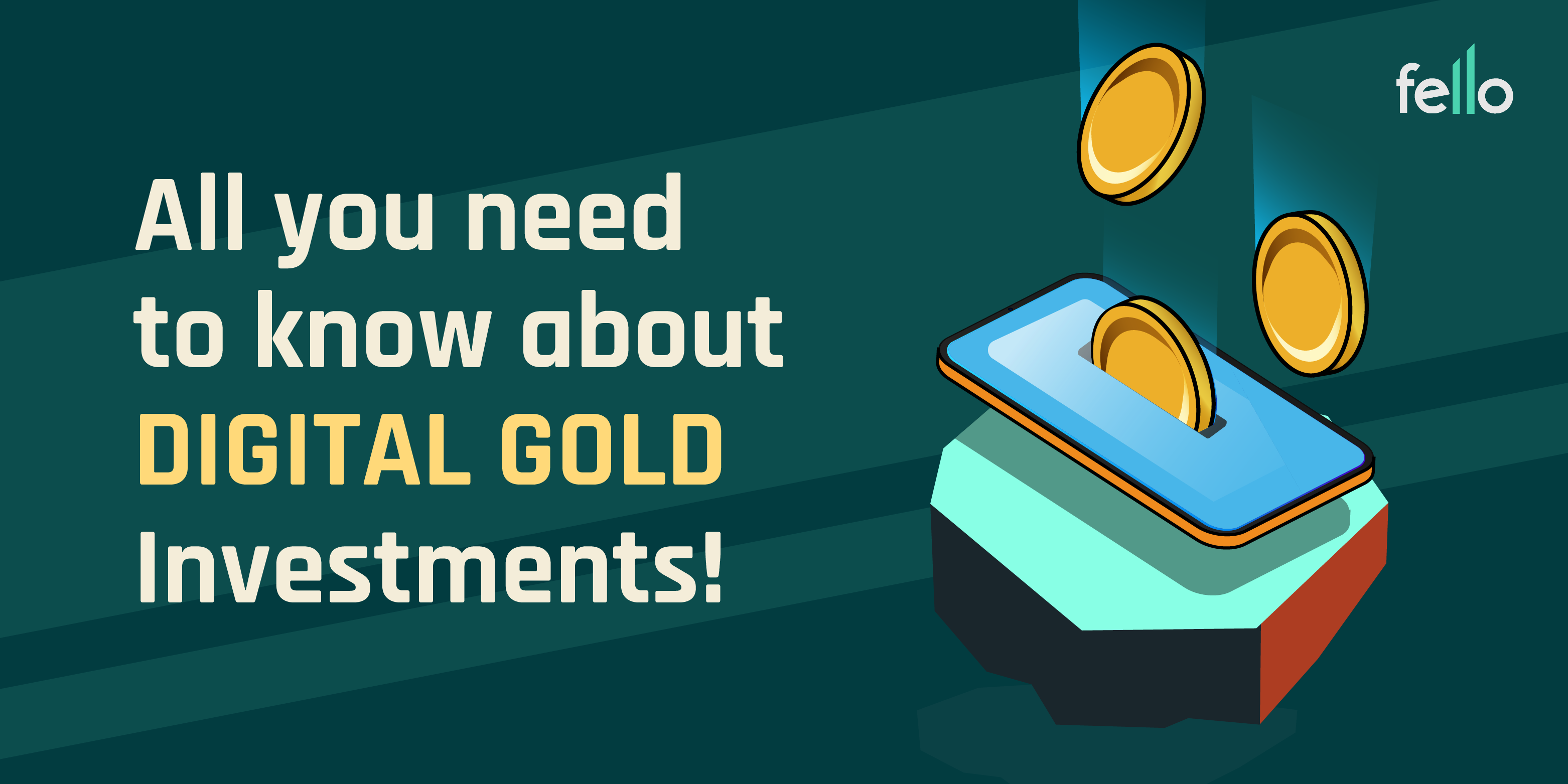Introduction
Most of us know that gold is one of the safest investments for guaranteed positive returns. In fact, your grandparents and even their parents likely owned gold. However, back in the day, the only way to invest in the shiny valuable metal was to buy it physically, which came with its share of concerns. We mean, think of the weight alone!
Buying physical gold also meant being aware of its purity and exact weight, as well as the price of gold on the day of purchase. This gave buyers very little control over their investment. Moreover, there were other challenges such as the need for secure storage and additional making costs. Thankfully, digital gold instruments completely eliminate these problems – a simpler and more economical alternative to physical gold.
In this blog, we will explore the various digital gold instruments – Gold ETFs, Sovereign Gold Bonds and Digital Gold- their similarities, differences and more!
The Common Ways To Invest In Digital Gold
Technology has made our lives a lot of comfortable and convenient. After all, you can now effortlessly buy or sell gold without even stepping out of bed, thanks to the various digital gold instruments. Gold Exchange Traded Funds (ETFs), Sovereign Gold Bonds (SGBs) and Digital Gold wallets are the most common ones. Essentially, all three allow investors to buy or sell gold assets in a matter of minutes without incurring any other costs.
Yes, that’s right – there’s no additional cost when it comes to digital gold, except the price of the gold purchased. There is no minimum purchase limit, additional making charges or other restrictions that apply to physical gold. Digital gold sounds like an excellent investment, right?
So, let’s take a look at the three most common ways to invest in digital gold!
P.S. At Fello, we are trying to drive financial literacy and firmly believe that in today’s digital age, consumers must be aware of ways to invest in digital gold.
A Quick Comparison: Gold ETFs Vs Sovereign Gold Bonds Vs Digital Gold
Let’s take a quick look at the three types of digital gold investments –
- Exchange-Traded Funds (ETFs) – Gold ETFs are essentially mutual funds whose units can be purchased on stock exchanges. There are various asset management companies (AMCs) that host their own gold ETFs. For example, SBI Gold ETF, Nippon India Gold ETF, etc. Most AMCs invest the buyer’s money in 99.5% purity gold, making it a safe and economical investment, especially as gold ETFs are regulated by the Securities and Exchange Board of India (SEBI).
- Sovereign Gold Bonds (SGBs) – Investors with a bank and Demat account can purchase Sovereign Gold Bonds issued by the Reserve Bank of India (RBI). They have an eight-year investment term but you can redeem them after five years. It also gives a yearly interest of 2.5 percent on the initial investment amount. Furthermore, when redeemed after maturity (that is, 8 years), there is no capital tax on the returns!
- Digital Gold Wallets – Recently, several financial companies have introduced gold wallets. Including us at Fello, but with a unique gaming twist!) Users can invest as low as one Rupee through digital gold wallets and avail multiple online transaction methods. Also, buyers can convert their digital gold into physical coins or bars, if the need for holding physical gold ever arises.
Now that we understand what each digital gold instrument is, let’s check out the important distinctions.
The Difference Between Gold ETFs, Sovereign Gold Bonds and Digital Gold Investments
Liquidity – Gold ETFs and SGBs are exchange-traded instruments. They can be traded only during market hours, that is from 9 am to 3:30 pm. You can operate Digital Gold wallets 24×7 even on trading market holidays.
Maturity – The minimum maturity period for SGBs is 5 years and there is a heavy penalty if it is redeemed before maturity. However, there is no such lock-in period for digital gold wallets. You can sell the assets instantly.
Security Of Investment – With digital gold wallets and ETFs, the gold you buy is stored in physical form in a vault. It comes with insurance for the entire invested value. This security does not extend to SGBs.
Taxation – Transactions made through digital gold wallets do not attract any taxes apart from a one-time 3% levy of Goods and Services Tax (GST). Moreover, digital gold ETFs incur a recurring annual charge of 0.5-1%. As mentioned before, if SGBs are redeemed before maturity, taxes are levied – depending on how long the gold was owned. To know more about gold taxation, check out this Fello article.
Prerequisites – Unlike gold ETFs and SGBs, individuals don’t need a demat account to invest through digital gold wallets. A mobile application linked to one’s bank account is the only prerequisite.
Surely, you must have realized that digital gold investments have numerous advantages over physical gold. Perhaps the only drawback with digital gold is that you will never be able to experience this!
However, we still have one unanswered question….
Mirror, Mirror, On The Wall, What’s The Safest Bet Of Them All?
Simply put, digital gold wallets are much more affordable than SGBs and Gold ETFs. It is possible to begin investing with very modest amounts using nothing but a smartphone. Several FinTech companies offer easy-to-use e-wallets to make digital gold investments simple and seamless.
Fello is one such company that allows you to invest easily in digital gold. Furthermore, it’s not just about the gold returns; by participating in our fun games, you can win exciting weekly rewards and more!
What are you waiting for, head on to Fello and start investing now!

